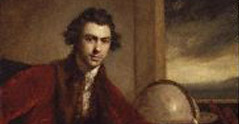|
EARLY MUSIC
Part 1: The Pembroke Choir Books and other Music Manuscripts from Pembroke College, Cambridge
PUBLISHER’S NOTE
Six liturgical musical part-books, c1650,
and an extremely rare 15th century manuscript of John Dunstable
form the core of this original microfilm publication which brings
together all the music manuscripts at Pembroke College, Cambridge.
This is the first time that these sources
have been made available. The part-books have been filmed first (Reels
1-2) followed by the Dunstable Ms and other sources (Reel 3).
The Pembroke Choir Books
"The early history of the six music
manuscripts preserved at Pembroke College, Cambridge, is an
almost complete mystery. The part-books, which are all in their
original bindings, were first discovered by Mr Charles Cudworth
in the early 1950’s, when they were found stacked in the
College Library on a shelf devoted to ‘elephants’....
The scale of some of the pieces in the Pembroke manuscripts
suggests that the part-books were not originally intended for
Pembroke College Chapel. Although the collection includes a
number of fairly straightforward compositions (such as Tallis’
‘I call and cry’ and William Mundy’s ‘O Lord,
I bow at the knees’) it also contains Tomkins’ twelve-part
full anthem ‘O praise the Lord, all ye heathen’ and
Byrd’s Great Service, in addition to two eight-part
compositions by William Child; only a highly-skilled choir would
have attempted music of the scale of these compositions."
John Morehen, College of Church Mission
Washington Cathedral + Mount Saint Alban, Washington DC
writing in The Sources of English Cathedral Music c1617-c1644 (Cambridge
PhD thesis, 1969)
The period from the accession of Elizabeth
I in 1558 and the publication of the Authorized version of the
Bible (King James text) in 1611 marked a golden age for English
culture. Those 50 years witnessed the flourishing of literature
and drama with Shakespeare, Marlowe, Sidney and Spenser; the
exploration of the world by Hawkins, Raleigh, Frobisher and Drake;
the scientific discoveries of Bacon, Gilbert and Harvey; and the
music of Byrd, Gibbons, Weelkes, Wilbye, Tallis and Dowland. Even
though public concerts were still unknown, music played a vital
part in Elizabethan culture. Composers actively collaborated with
playwrights and poets; madrigals were popular songs; and church
services were accompanied by glorious vocal and organ music.
The six Choir Books held at Pembroke
College, Cambridge are an important source for scholars of Early
Music and contain compositions by most of the leading figures,
including:
Thomas Tallis (c1505-1585) -
organist at Waltham Abbey and the Chapel Royal who was granted a
20 year monopoly of music publishing with his pupil William Byrd
in 1575. He is represented by 3 works including his Short Service
and ‘I call and cry to thee O Lord’.
William Byrd (1543-1623), another
member of the Chapel Royal who composed for both the Latin and
the Anglican services and created his finest works in the
religious field. There are 7 works by Byrd ranging from his Great
Service to ‘Sing joyfully’ and ‘Christ rising’.
Orlando Gibbons (1583-1625) -
sometimes described as "the last of the Elizabethans",
virginalist to King James I and organist at Westminster Abbey.
Among the 6 works gathered here are his Short Service, First
Preces and Psalm, Second Preces and Psalm, ‘Behold I bring
you glad tidings’ and ‘glorious and powerful God’.
William Mundy (1529-1625), composer
and singer in the Chapel Royal. His Service and ‘O Lord I
bow the knees’ are featured here.
Thomas Tomkins (1572-c1650),
composer of some of the greatest masterpieces of English
polyphonic church music. There are 8 works by Tomkins including
two services (Magnificat and Venite), ‘O pray for ye peace
of Jerusalem’, ‘Above the stars my saviour dwells’
and ‘O praise the Lord’.
Other composers represented are:
Dr Bull,
William Child (12 works - 5 services, 3 Full and 4 Festal Anthems),
Richard Farrant (3 works, some unique),
Nathaniel Giles (5 works),
Hooper (2 works),
Robert Johnson,
Morley (2 works) and
Rob Parsons.
The part-books were probably compiled
between 1625 and 1644 and whilst their exact origin remains a
mystery, it is possible that William Child was directly or
indirectly connected with them. He was a friend of Matthew Wren
whose new Chapel at Pembroke was dedicated in 1665.
John Dunstable
Described by the New Grove as "the
most eminent of an influential group of English composers active
in the first half of the 15th century" John Dunstable (1390-1453)
left behind remarkably few manuscript sources. There are only 51
items bearing uncontradicted ascriptions to him, and no more than
20 of his works are known to have been copied in English sources.
Mss 314, which appears at the start of Reel 3, is a collection of
musical fragments. Of these, the most significant are items 6 , 7,
8 & 9 which comprise two bifolia, each the middle of a
gathering, from a choir book of c1440, now split into four
separate leaves. These contain three votive antiphons [Marian],
two settings of the Gloria and three of Credo. The ascription "Dunstabell"
appears at the head of one of the leaves. The Gloria is unique
and one of the credos (‘factorem celi et terrae,
visibilis omnis et invisibiliis’) and ‘Quam
pulchra es’ (for 3 voices) can definitely be attributed
to him. These readings have a special authority, as they arise
from a native source produced during the lifetime of John
Dunstable.
Miscellanea
The remaining six volumes round off this
small but choice collection of musical sources. They include two
works by A Cornelli in manuscript (Op 2 & Op 4), a small
collection of musical scores (ranging from Tudway to Thornowitz,
probably early 18th century), a collection of anthems and
canticles (Dr Blow, Henry Hall, Mr Tucker, Thomas Tudway et al,
early 18th century), a collection of Opera songs and airs (printed,
1725), the Psalms of David (printed, 1790) and a volume on
harmonics by Robert Smith (printed, 1749).
< Back
|
|















